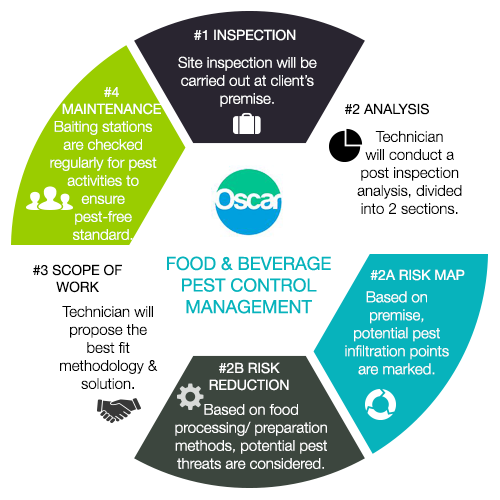The Role Of Bug Exterminators In Environmental Sustainability
The Role Of Bug Exterminators In Environmental Sustainability
Blog Article
Posted By-Brooks Sejersen
You may think that bug exterminators are just concerned with eliminating parasites, yet their function exceeds that. They play an essential part in ecological sustainability.
By utilizing integrated pest monitoring techniques, they not just remove parasites but additionally protect biodiversity.
Additionally, they use lasting parasite elimination methods to minimize environmental risks.
So, next time you question the relevance of pest exterminators, remember their payment to a greener and healthier earth.
The Relevance of Integrated Pest Monitoring
You must comprehend the relevance of incorporated insect management in keeping a sustainable environment.
Integrated Bug Monitoring (IPM) is a method that concentrates on protecting against and regulating parasites while minimizing using damaging chemicals. By applying hop over to this site , you can effectively take care of bug populations without creating harm to the setting.
One vital aspect of IPM is the use of biological controls, such as killers and parasites, to naturally manage pest populations. This reduces the requirement for chemical pesticides, which can have harmful effects on wildlife and ecological communities.
Furthermore, Visit Home Page making use of social and physical controls, such as plant turning and exclusion strategies, to avoid bugs from becoming a trouble in the first place.
Shielding Biodiversity Via Parasite Control
We can secure biodiversity with effective pest control approaches that prioritize the preservation of natural communities. By using accountable bug control practices, we can secure and preserve the delicate balance of varieties within our atmosphere. Below are three ways in which pest control adds to guarding biodiversity:
- ** Protecting native plants and animals ** - By targeting invasive types that endanger native plants and animals, pest control aids guarantee the survival of aboriginal varieties and preserves the natural diversity of ecosystems.
- ** Preventing the spread of diseases ** - Regulating parasites such as insects and ticks reduces the danger of diseases infecting wild animals populaces, securing biodiversity and preventing potential episodes.
- ** Conserving jeopardized species ** - By taking care of bugs that prey on or take on endangered types, pest control initiatives can boost the possibilities of survival and promote the recovery of susceptible populaces.
Via liable insect control methods, we can actively contribute to the conservation of biodiversity and the sustainability of our natural world.
Mitigating Environmental Threats With Sustainable Insect Elimination Methods
By utilizing lasting parasite extermination methods, you can properly mitigate ecological threats while making certain the safety and wellness of both humans and the natural environment. Conventional pest control methods frequently include the use of dangerous chemicals that can have detrimental effects on the atmosphere.
Nevertheless, sustainable pest extermination approaches concentrate on reducing these threats by making use of environmentally friendly options. For example, integrated insect administration (IPM) techniques focus on making use of non-toxic and naturally degradable items, in addition to all-natural killers to regulate pest populaces. This strategy not only minimizes the adverse impact on the setting yet also aids to maintain the delicate balance of the ecosystem.
Additionally, sustainable bug elimination methods promote the preservation of biodiversity by targeting specific insects without harming useful organisms. By embracing these approaches, you can contribute to a more sustainable and eco-friendly method to pest control.
Final thought
You are the pest exterminator, the guardian of nature's harmony. With incorporated parasite administration, you stabilize the fragile environment, guaranteeing the survival of varied species.
Through sustainable methods, you alleviate environmental risks, keeping the fragile equilibrium undamaged.
Like a symphony conductor, you manage the rhythm and flow, safeguarding the biodiversity that dances in excellent consistency.
With every step you take, you develop a globe where nature flourishes, where insects pull back, and where sustainability reigns supreme.
